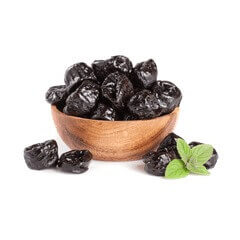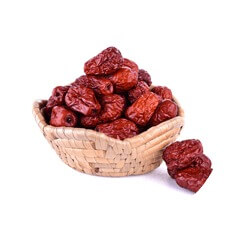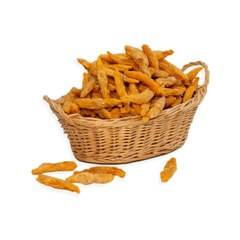Highly consumed starches around the world, rice and pasta are faithful and accessible allies in our daily meals. However, are they as similar as you think? Is one healthier than the other? Composition, how to cook them, and nutritional verdict.
When mealtime arrives, the choice often oscillates between one and the other. Here are some arguments to successfully make your choice. So, continue reading the article and don’t go anywhere before reading and digesting it all.
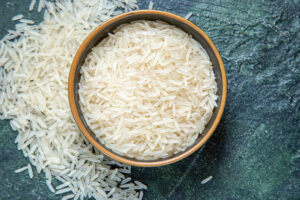
Rice
Nutrition Side
Composition:
It is a cereal and probably the most consumed in the world. Depending on the stage of processing after harvest, it is found whole or brown (with germ and bran), white (germ and bran removed) or parboiled (subjected to a heat treatment to prevent the grains from sticking). It is also distinguished by the variety and size of the grain.
Carbohydrate profile:
The carbohydrate intake is high – 78.6 g per 100 g of cooked parboiled – but it is essentially starch: 72.1 g/100 g. These levels change little depending on the variety, and the processing undergone by the grain. These complex carbohydrates are transformed into simple glucose to be digested.
Calorie intake:
356 calories per 100 g of raw parboiled rice or 146 calories per 100 g cooked. The energy intake is almost identical for all the varieties.
Protein content:
7 g per 100 g of raw parboiled rice, which is low since a cooked 150 g portion provides only 5 g. Gluten-free, it is more digestible than wheat-based products and is a starchy food of choice for celiac patients. Moreover, it does not contain all the essential amino acids.
Satiety index:
Its glycemic index is average: 64 for white rice, which means that it is assimilated fairly quickly. But many parameters influence this index, such as the degree of refinement, the variety and the cooking time. So, where refined quick-cooking rice has an iG of 87 (more than candy!), basmati rice is 58, and brown rice is 50.
Kitchen Side
Cooking time:
Between 5 and 20 minutes, or even more, depending on the variety and the degree of refinement.
Difficulty:
Easy. Simply cook the rice in salted water for the time indicated. The idea is an electric rice cooker that ensures perfect cooking by absorption.
How to Get By Easily With the Rice Cooker
The advantage of the rice cooker is that there is nothing to monitor: it stops when there is no more water to evaporate, and it keeps the rice warm as long as you want
Two tips
- Use a wet utensil to serve the rice easily without it sticking to the spoon.
- To globally and quickly assess the quantity of water needed to cook the rice, simply place your hand flat in cold water, which should touch the upper part of the knuckles.
Possible associations:
It benefits from being spiced up with spices (curry, saffron, etc.). Fish and poultry appreciate it, and it can be used as a base, combined with meat, to stuff vegetables. Round, it forms the basis of risottos and is used to make rice pudding.
Verdict
Rice is a good energy provider, particularly high in complex carbohydrates. For better satiety, choosing it unrefined (especially not quick cooking!) or opting for varieties such as basmati rice and wild rice is better.
Pasta
Nutrition Side
Composition:
Pasta is a mixture of water and flour (usually durum wheat) to which eggs can be added. They are found dry (moisture content below 12%) or fresh (above 12%).
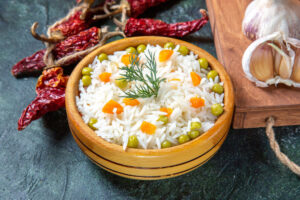
Carbohydrate profile:
They are rich in carbohydrates (65.8 g/100 g, raw), and the most complex: 62 g, come from starch, made up of chains of glucose molecules. Having to be broken down into glucose molecules to be assimilated, they are slowly digested.
Calorie intake:
336 calories per 100 g of raw standard dry pasta, or 126 calories per 100 g once cooked. Those with eggs are more energetic: 168 calories per 100 g cooked.
Protein content:
11.5 g per 100 g of standard dry pasta. These proteins form a sticky substance, gluten, which is difficult for some people to digest and not tolerated by celiac patients. Of vegetable origin, these proteins do not contain all the essential amino acids and must be combined with other vegetable proteins (legumes, etc.) to replace meat or fish. Egg pasta is rich in protein (14 g) and contains all the essential amino acids.
Satiety index:
Pasta provides long-lasting satiation thanks to the low rate of assimilation of its carbohydrates. Their low glycemic index varies from 44 to 55 depending on many parameters, including the degree of refining and the cooking time. Thus, the iG of spaghetti cooked al dente is 44, which remains very moderate.
Kitchen Side
Cooking time:
It is short, 8 to 12 minutes, depending on the variety of pasta, and 3 to 5 minutes for fresh ones.
Difficulty:
There is none; just immerse them in boiling salted water: 1 l per 100 g. We check the cooking by tasting: they must be a little firm, not crunchy.
Possible combinations: simple (drizzle of olive oil + chopped aromatic herbs) or more sophisticated (fresh poached salmon + Greek yogurt + chives); they go well with vegetables, meat, fish, Cold or hot!
Verdict
Satiating, easy to prepare and to accommodate: pasta is a must.
“It is better to choose them complete or semi-complete because they provide fibre, vitamins and minerals.
Their main drawback is the digestive discomfort they can cause in some people due to their high gluten content. For these people, there is pasta prepared with rice flour and legumes.
Visit the ADNOOR website for the best golden Sella basmati rice, long-grain rice, brown rice, Super Kernel Basmati Rice, white rice, nuts, seeds, and dried fruits. We take pride in saying that we are among the best rice distributors in Canada and have been the importers, exporters, wholesalers, distributors, and co-packers of various nuts and grains in Canada for the last 25 years. We aim to provide our customers with quality products so they keep trusting us. So without wasting time, visit our website and order what you need.




